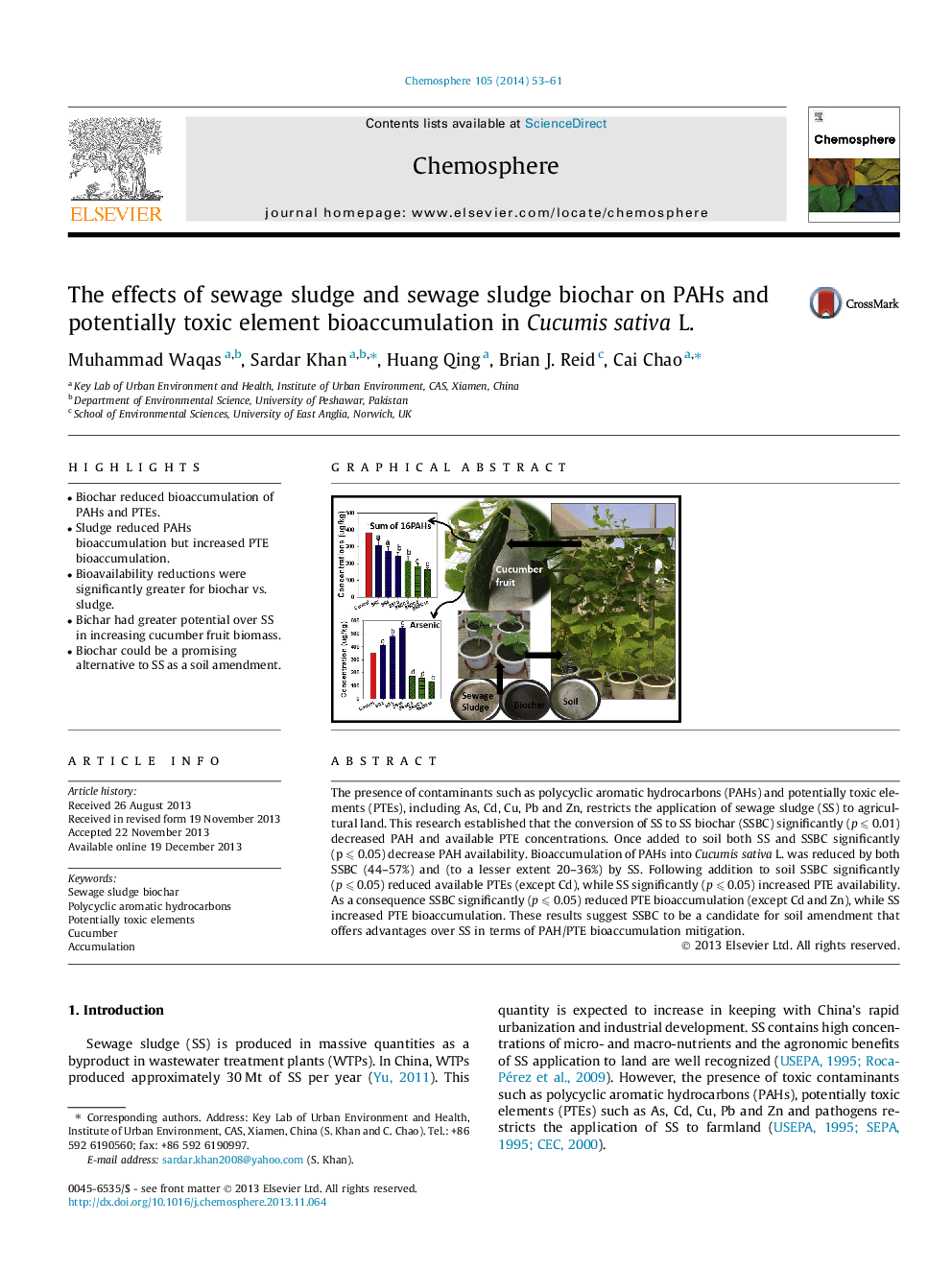| Article ID | Journal | Published Year | Pages | File Type |
|---|---|---|---|---|
| 4408878 | Chemosphere | 2014 | 9 Pages |
•Biochar reduced bioaccumulation of PAHs and PTEs.•Sludge reduced PAHs bioaccumulation but increased PTE bioaccumulation.•Bioavailability reductions were significantly greater for biochar vs. sludge.•Bichar had greater potential over SS in increasing cucumber fruit biomass.•Biochar could be a promising alternative to SS as a soil amendment.
The presence of contaminants such as polycyclic aromatic hydrocarbons (PAHs) and potentially toxic elements (PTEs), including As, Cd, Cu, Pb and Zn, restricts the application of sewage sludge (SS) to agricultural land. This research established that the conversion of SS to SS biochar (SSBC) significantly (p ⩽ 0.01) decreased PAH and available PTE concentrations. Once added to soil both SS and SSBC significantly (p ⩽ 0.05) decrease PAH availability. Bioaccumulation of PAHs into Cucumis sativa L. was reduced by both SSBC (44–57%) and (to a lesser extent 20–36%) by SS. Following addition to soil SSBC significantly (p ⩽ 0.05) reduced available PTEs (except Cd), while SS significantly (p ⩽ 0.05) increased PTE availability. As a consequence SSBC significantly (p ⩽ 0.05) reduced PTE bioaccumulation (except Cd and Zn), while SS increased PTE bioaccumulation. These results suggest SSBC to be a candidate for soil amendment that offers advantages over SS in terms of PAH/PTE bioaccumulation mitigation.
Graphical abstractFigure optionsDownload full-size imageDownload as PowerPoint slide
